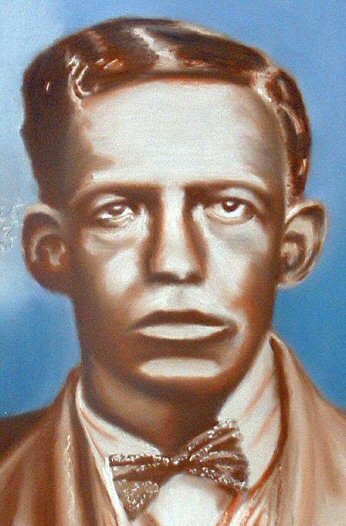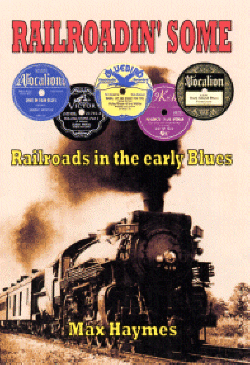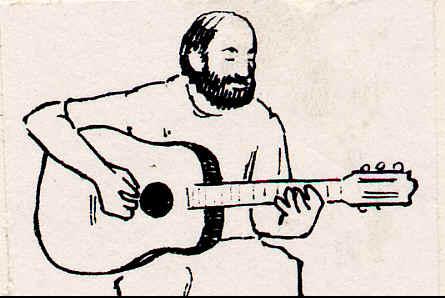|
Introduction
Of
all the subjects in these studies, the music hall is probably the
farthest away from Africa. Or put another way, it is the link with the
Blues which can be considered the most 'non-African'.
The phenomenon of the music hall was originally a peculiarly English
institution of the working-classes which seems to have been centered in
London and from there spread to other towns and cities throughout the
British Isles.
It
is necessary, therefore, for the purpose of this study to delve into the
origins of this phenomenon. The inclusion of pleasure-gardens, Free-and-Easies, music booths in fairgrounds,
etc. is a well
that has been visited many times in the past; however, the albeit brief,
reference to street singers, penny gaffs, and broadside ballad sheets in
connection with the early days of music halls is, I contend, territory
which is rarely covered. In the case of Mayhew's 'purl-men' on the
Thames, I know of no other written reference to this phenomenon in
connection, the oral transmission of music hall songs. Indeed, I have
not yet come across the phrase 'purl-men' anywhere else! Of course, even
the more familiar origins of the 'halls', as listed above, have never
been linked to the Blues of the Deep South in the United States; except
in passing.
Although one of these rare references states that few music hall songs
reappeared in the Blues, which were first recorded some 20-odd years
after the hey-day of music halls (1890-1914), it only gives part of the
true picture. If the English songs themselves did not resurface on Blues
records, themes, phrases, and even words, showing the music hall
influence, certainly did. I will be comparing the efforts of some of
the English 19th. century singers such as Vesta Victoria and Marie Lloyd
with those of some of the so-called 'Classic' Blues singers in the
1920's. As Stewart-Baxter put it "The term Classic Blues has always
been a very inaccurate description for such a varied form. However we
twist and turn the phrase, we come back to the strongest influence, that
of vaudeville and the music hall."(1). This influence covers the whole
spectrum of the genre from more 'light-hearted' offerings of an Edith
Wilson to the 'heavy' blues of a Bessie Smith. Stewart-Baxter rightly
posits that "It would be more correct to call them Vaudeville
Blues."(2).
But this is not the only area of the Blues to feel the influence of the
English music hall. I shall be using examples from singers of other
categories of the Blues, to illustrate that themes and songs were
adapted by singers with widely diversifying styles and from different
geographical areas.
How these influences occurred will be covered in Chapter 2; or at least
the suggested routes will be argued. Many English music hall singers
visited the U.S.A. in the latter half of the 19th. century and travelled
as far as the West Coast. The age of minstrelsy and 'blackface' or 'coon
songs' (via Thomas Rice and his song "Jim Crow" in the 1830's), brought
many American artists to British shores, including the Moore and Burgess
Minstrels, which inspired a whole series of 'coon songs' by English
music hall artists. Of course by 1912, the latest craze of ragtime
brought even more U.S. visitors who made their musical influence also
felt.
From 1893, many of the music hall performers committed their vocal
efforts and songs to cylinders and later to records. In the first decade
of the present century, a few recorded in New York City and Camden, New
Jersey. Recordings, once they arrived, were to play a vital role in the
continuation of different cultures. "The recording is not simply a
documentary device that composes a new selective tradition - affecting
who heard what when - but a means for reshaping and extending the oral
tradition."(3). In the U.S. blacks could hear fellow musicians and
singers from regions all over the States, for the first time and as
Sidran says "Many Negroes in all parts of the United States gained their
first significant exposure to their own culture through records rather
than through live performances."(4). Although many English music hall
artists did not have records released in the U.S.A., a lot of them
travelled through the country giving live performances, with varying
degrees of success. With the advent of the first black Blues singer,
Mamie Smith, on record in 1920, this opened up a veritable flood-gate of
black performers. Sidran states "The recording industry predated by
several years the influence of radio and was the major source-cultural
transmission during the early twenties."(5). By this transmission I
intend to show that the English music hall connection is in fact a
strong, non-African root of the Blues.
Notes
1. Stewart-Baxter D.p.9S.
2. Ibid.
3. Sidran B.p.64.
4. Ibid.p.65.
5. Ibid.
_________________________________________________________________________
Chapter I :
In The Beginning - Chaunters and
Broadsides
|








